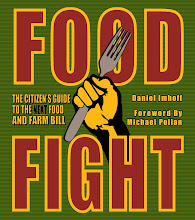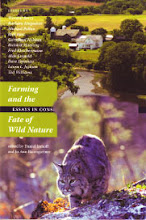In December I traveled to the Mexican state of Jalisco to attend a wedding in a rural town a few hundred miles southwest of Guadalajara. As we drove through the mountainous, cactus-studded landscape, my wife and I tried to decipher the agriculture taking place around us. Close to Guadalajara, we passed many harvest-ready corn fields, plentiful and broad in the valleys, with patchwork strips and contours on steeper hillsides. We were surprised, however, to find so much sugar cane. Deep green swaths of the reed-like canes contrasted strangely against the otherwise parched ground. Occasionally, we also witnessed heavy black plumes rising high from a refinery furnace. The pressed dried cane or bagasse is burned as a fuel to refine sugar as it is done all over the world.
The presence of sugar cane shouldn't have come as that much of a surprise. In John Steinbeck's concise cultural, economic, and political history of Mexico for the production team of the 1952 film, Viva Zapata!, he wrote that sugar cane was the engine behind the repressive feudalism that led to the Revolution in the second decade of the 20th century. For over 30 years, common grazing lands and village corn fields had been expropriated from peasants by the government of Porfirio Diaz, who deeded them to ever-larger hacienda landowners, who converted them to sugar cane plantations or exploited their mineral wealth. Ultimately, Diaz's ruthless dictatorship left Mexico's desperate millions no choice but to fight to the death against the sugar barons to regain their lands.
As we drove south and west on the two-lane Carretera Barra de Navidad, we saw a different kind of radical change taking over the landscape. Corn was ever-present. Small gangs of workers were running small combines through the dried fields, generating small clouds of dust as they bagged their corn. Their fields were neat, the soils seemingly well cared for in many areas, the corn shocks piled in heaping stacks that we assumed would later be burned. But what we began to see more and more of were large fields of agave, known also as maguey or century plants. These are the blue-grey sword-like succulents that are the essential (and sole) ingredient in tequila.
The farther west we traveled, the more we came across not just large fields but entire valleys planted to the star shaped agaves. Some were waist to chest high and seemingly near the eight-year harvest period. Others were newly established, the small crown-like plants geometrically dotting the lime-dusted ground, which the mineral hungry agaves require. One got the feeling of the intensively planted vineyard areas of Northern California and, increasingly, Oregon, where the fertile valleys and hillsides have been converted to a monoculture of grapes, leaving only the steeper mountainous slopes in any state of native vegetation. In this case it was fields of the smokey blue-grey cactus-like agaves, from foothill to foothill.
The story of the blue agave is also a tale of monoculture. While agave is grown in many areas around the country, there is a specific geographic region in Central Mexico where tequila can only be produced. Jalisco is the heartland of the tequila region where the succulent leaves of the plant are stripped off after eight years, revealing a bulbous center called a head. To make tequila, the head is cooked, chopped, fermented, distilled, then aged.
I had heard about this agave craze for the past five years from the man we were going to see in Jalisco. He's a seasonal worker who journeys to Northern California for eight to nine months per year, and whose oldest daughter was getting married. I had also been hearing about the adverse economic effects of NAFTA and U.S. corn subsidies on Mexico's corn farmers, but I had no idea that this maize-to-agave conversion was so extensive.
Another piece of the puzzle clicked into clear focus. I had interviewed my friend Dr. Gary Nabhan on my radio show, after he'd published Tequila! A Natural and Cultural History, co-authored with Ana Valenzuela-Zapata. In a chapter of that book ("When the Epidemic Hit the King of Clones"), Nabhan and Valenzuela-Zapata chronicle the plague that struck Mexico's traditional tequila region in the mid- to late-1990s. A fungus known as "el anillo rojo" ("the red ring") had a basic wilting effect on the agave, transforming them from stately upright stars into oozing masses of rotting pulp. Agave growers had essentially narrowed the genetic diversity of their cultivars so uniformly in terms of both age and variety, that they became vulnerable to biological catastrophe. The epidemic struck swiftly, affecting millions of plants and quickly prompting a shift into regions of Jalisco that had never been previously planted for tequila production.
Biological diversity, according to Nabhan and Valenzuela-Zapata, is the key strategy in sustaining long-term agave production. Rather than relying on single genetic clones of the blue agave, a wide variety of other agaves can be interplanted in fields that are suitable for tequila production and that are cross-pollinated by bats and other winged visitors. This native diversity provides healthy resistance to keep diseases and pathogens from getting quickly established. In addition to diverse varieties within the agaves themselves, intercropping with leguminous plants such as peanuts or beans can help to support soil health and limit pest outbreaks.
The next morning, as I walked though a newly planted agave field just behind my friend's house in a rural town, I thought about the boom-and-bust cycles so helplessly linked to agriculture. The agave boom was already over, my friend told me. Although more and more people all over the world were discovering tequila, the market was already saturated, land prices were escalating, and this was no longer the get-rich-quick sure thing scheme it appeared to be just a few years ago. The sun was rising over the small village, the Mexican economy was on the move, alcohol was, once again, proving itself to be one of the more profitable products of the fields, and an age-old challenge remained. How can we humans achieve that elusive goal of nurturing resilience in the land we take so much from, so that we can ensure a long-term future for the soils, the water, the native species, and communities that live there?
Friday, January 06, 2006
Subscribe to:
Posts (Atom)









